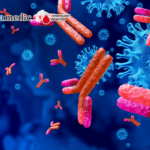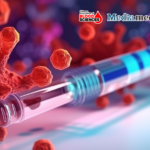
From April 11 to 13, 2025, the 5th Chinese Urological Doctor Association Yanqi Lake Meeting—jointly organized by the Chinese Medical Doctor Association and Chinese Urological Doctor Association—was successfully held in Beijing. The event brought together prominent experts from across the country to explore the future of urology in China. UroStream invited Professor Nianzeng Xing, President of the Chinese Urological Doctor Association and expert from the Cancer Hospital, Chinese Academy of Medical Sciences, to discuss the meeting highlights, the importance of multidisciplinary collaboration, and efforts to improve care in grassroots hospitals.UroStream:This year’s CUDA Yanqi Lake Meeting featured a rich agenda focusing on clinical practice, standardized treatment, and scientific research in urology. What were CUDA’s goals in designing this program, and which aspects do you think are particularly noteworthy?
Prof. Nianzeng Xing: At this year’s CUDA Yanqi Lake Meeting, we invited the presidents of regional urology branches from all over the country to take part in an in-depth discussion on development strategies and future directions for urology in China. Experts exchanged views on hot topics, cutting-edge advances, and key challenges in the field.
In keeping with previous meetings, this year’s agenda covered innovations in urological techniques and new therapeutic strategies for urologic tumors, such as immunotherapy, targeted therapy, and radiopharmaceuticals. It also featured updates in diagnostic technology and advances in areas like tele-surgery and organ transplantation.
We hope this conference continues to foster academic exchange and cooperation, drive the development of the urology field, and ultimately improve the quality of care available to patients.
UroStream: Radionuclide diagnostics and therapeutics have developed rapidly in recent years. You have previously emphasized the importance of collaboration to advance nuclear medicine. How can we foster multidisciplinary cooperation to accelerate the clinical application of emerging techniques—such as ⁶⁸Ga-PSMA-11 PET/CT and ¹⁷⁷Lu-PSMA-617—and bring tangible benefits to patients in China?
Prof. Nianzeng Xing: Radionuclide diagnostics and therapeutics have made significant strides in urology. Taking prostate cancer as an example, the development of PSMA-targeted radiotracers has greatly improved our diagnostic capabilities. The use of gallium-68 is now quite established, and research into carbon-14 and copper-64 continues to progress. These advances are enhancing early diagnosis and accurate staging for prostate cancer.
On the therapeutic side, radioligand therapy (RLT) has attracted increasing attention. The use of lutetium-177 (¹⁷⁷Lu) has shown promising results in prostate cancer, and actinium-225 (²²⁵Ac) is emerging as a hot topic in international research, with great potential for future oncology treatments.
Although China started relatively late in this field, we have a solid foundation. Encouragingly, the gap with leading global standards is not insurmountable. We are in a favorable development phase—if we seize the opportunity, we can not only catch up, but possibly lead in certain areas.
To achieve this, multidisciplinary collaboration is essential. Basic science experts play a critical role in discovering new targets, which lays the groundwork for radiopharmaceutical development. Clinically, urologists, medical oncologists, radiologists, and nuclear medicine specialists must work hand in hand. Urologists can explore new treatment approaches for prostate, bladder, and kidney cancers. Medical oncologists can integrate radiopharmaceuticals into comprehensive treatment plans. Radiology and nuclear medicine experts provide the imaging tools and technical support required for precision diagnosis and response monitoring.
Moreover, several Chinese pharmaceutical companies have shown strong innovation and social responsibility by investing in R&D and production. Their collaboration with clinical and research teams is propelling the field forward—not only helping patients in China but also promoting new business models. The integration of technological and industrial innovation is helping to overcome bottlenecks in domestic radiopharmaceutical development and is crucial to high-quality growth in China’s healthcare industry.
UroStream: As President of the CUDA Urology Branch, could you share what initiatives CUDA plans to implement to further improve the diagnosis and treatment of urologic cancers in grassroots hospitals across China?
Prof. Nianzeng Xing: China’s vast geography means there are inevitable regional disparities in medical development. Although the field of urology has made remarkable progress in recent years—and some of our technologies and treatment approaches are now globally leading—uneven development remains a concern, especially between hospitals of different tiers or between urban and rural regions.
Our goal is to narrow these gaps and promote standardized care across all regions. CUDA’s Urology Branch has a major role to play and must continue to take proactive steps to drive progress.
To this end, we’ve adopted innovative approaches to physician training. On one hand, we regularly organize academic conferences to create offline platforms where doctors can stay current with cutting-edge theories and research. On the other, we host monthly surgical demonstrations through online channels, allowing experienced surgeons to share their skills in real-time with colleagues nationwide. This overcomes the limitations of traditional master-apprentice training, giving grassroots physicians direct access to advanced surgical techniques and hands-on insights.
Another key initiative is the “Urologist Outreach Program”, which has achieved excellent results. We organize expert teams to visit underdeveloped regions, delivering lectures, conducting live surgery demonstrations, and even providing free consultations. These efforts not only enhance the skills of local doctors and foster stronger ties between different levels of hospitals, but also allow local residents to receive top-level medical services without having to travel far. It significantly improves public satisfaction and gives communities a tangible sense of support from both the government and the academic medical community.
Professor Nianzeng Xing Vice President, National Cancer Center / Cancer Hospital, Chinese Academy of Medical Sciences Chief Physician, Department of Urology Doctoral and Postdoctoral Supervisor Director, Beijing Key Laboratory for Cell and Gene Therapy in Urologic Tumors Member of the National People’s Congress Consulting Expert, Central Health Committee
Honors and Recognitions:
- Recipient of the inaugural “National Distinguished Physician” title
- Recognized as a National Outstanding Young and Middle-Aged Expert with Significant Contributions
- National-level talent in the “Millions of Talents Project”
- Awarded the title Outstanding Young and Middle-Aged Expert by the National Health Commission
- Recipient of the Special Government Allowance of the State Council
- Honored as a Nationally Renowned Physician
- Laureate of the Wu Yang Award for Excellence in Medicine and Pharmacy
Academic and Leadership Roles:
- President, Urology Branch, Chinese Medical Doctor Association
- Chair-Elect, Urology Branch, Beijing Medical Association
- Member, Endourological Society
- Editor-in-Chief, UroPrecision
- Editorial Board Member, Journal of Urology
- Deputy Editor-in-Chief, National Medical Journal of China
- Deputy Editor-in-Chief, Chinese Journal of Urology
- Deputy Editor-in-Chief, Chinese Journal of Endoscopic Urology
- Deputy Editor-in-Chief, Journal of Clinical Urology
- Chief Scientist, National Key R&D Program of China
Academic Contributions:
- Over 400 academic papers published in domestic and international journals
- Editor-in-chief of 23 academic monographs


